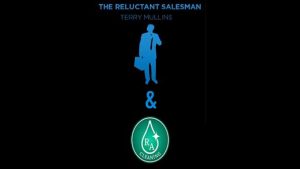
Making Selling Simple in the Cleaning Sector
Here’s how our latest client, Rest Ashore Cleaning an eco-friendly cleaning company in Cornwall, discovered the way that The Reluctant Salesman’s simple processes made an immediate impact. As

When I was a carpenter, I naturally had to go to timber merchants and because I was a professional, I had a pretty good idea of what I wanted so I could get in and out ‘relatively’ quickly. There was no self-serve option in those days so I had to wait for one of the surly yard guys to be free, explain what I needed and then go with him to find it. If it was busy time, it could take a while. If I was behind a DIY enthusiast, it could take an eternity.
There wasn’t much selling involved. I was there to buy and they were there to sell so getting it done was in everyone’s interest, but it wasn’t easy. Timber merchants still exist and are a lot friendlier now but you don’t see many DIY people there these days. Most go to the big DIY stores where you can buy nails, screws and even lengths of wood in pre-wrapped plastic bags, and nowadays I’m right there with them. I probably pay a little more than I need to but everything is displayed and most of it fits in my car, and apart from the occasional checkout queue, it’s a lot faster.
The big stores attract professionals and amateurs alike because they make buying complicated stuff simple. It’s not lengths, it’s packs; it’s not boxes of fittings, it’s single bags. They have realised that selling is simple when we make buying simple and that the biggest obstacle you have when selling anything is client confusion…
There’s a story that some years ago a famous London luxury store had a problem selling a new range of jam in their food hall. The jam in question was available in many different traditional and exotic flavours and displayed in a beautiful rustic solid oak display. Big things were expected of this new ‘traditional’ product and nobody could figure out why it wasn’t selling. An enterprising member of staff was asked his opinion and he enlisted the help of his mum. The lady spent just five minutes looking at all the jars and then nailed it. “There’s too many to choose from,” she said. The store reduced the selection and sales took off.
Making products easy to buy is relatively simple but services are a bit more of a challenge, but it is possible to productise (horrible word) many services and make them easier to buy. If you know my material, you know I’m not big on persuasion -if someone is talking to me about a product or service, I know that they are looking for that product or service. It’s common sense, so why do I need to persuade someone to do something they already want to do? My job isn’t to make them buy, it’s to HELP them to buy, in fact to help them to do what they already want to do. If I can reduce the service to a package, a generic version of what it is I do with a price attached, then selling is easier.
An accountant wishing to sell their service to business start-ups has a business start-up pack that covers everything needed for the first year, a solicitor has a flat fee for house purchase work, a web designer has one or two package prices to cover the most common website builds.
Indeed, there’s an old saying – ok, it’s not that old, I just made it up…
If You Confuse Them, You Lose Them
Is your offering too complicated? If so, it’s worth remembering that making it simpler for the client will make selling simpler for you.

Here’s how our latest client, Rest Ashore Cleaning an eco-friendly cleaning company in Cornwall, discovered the way that The Reluctant Salesman’s simple processes made an immediate impact. As

This month I am doing something a little different. Instead of a book review I am giving you a sample of the new book I